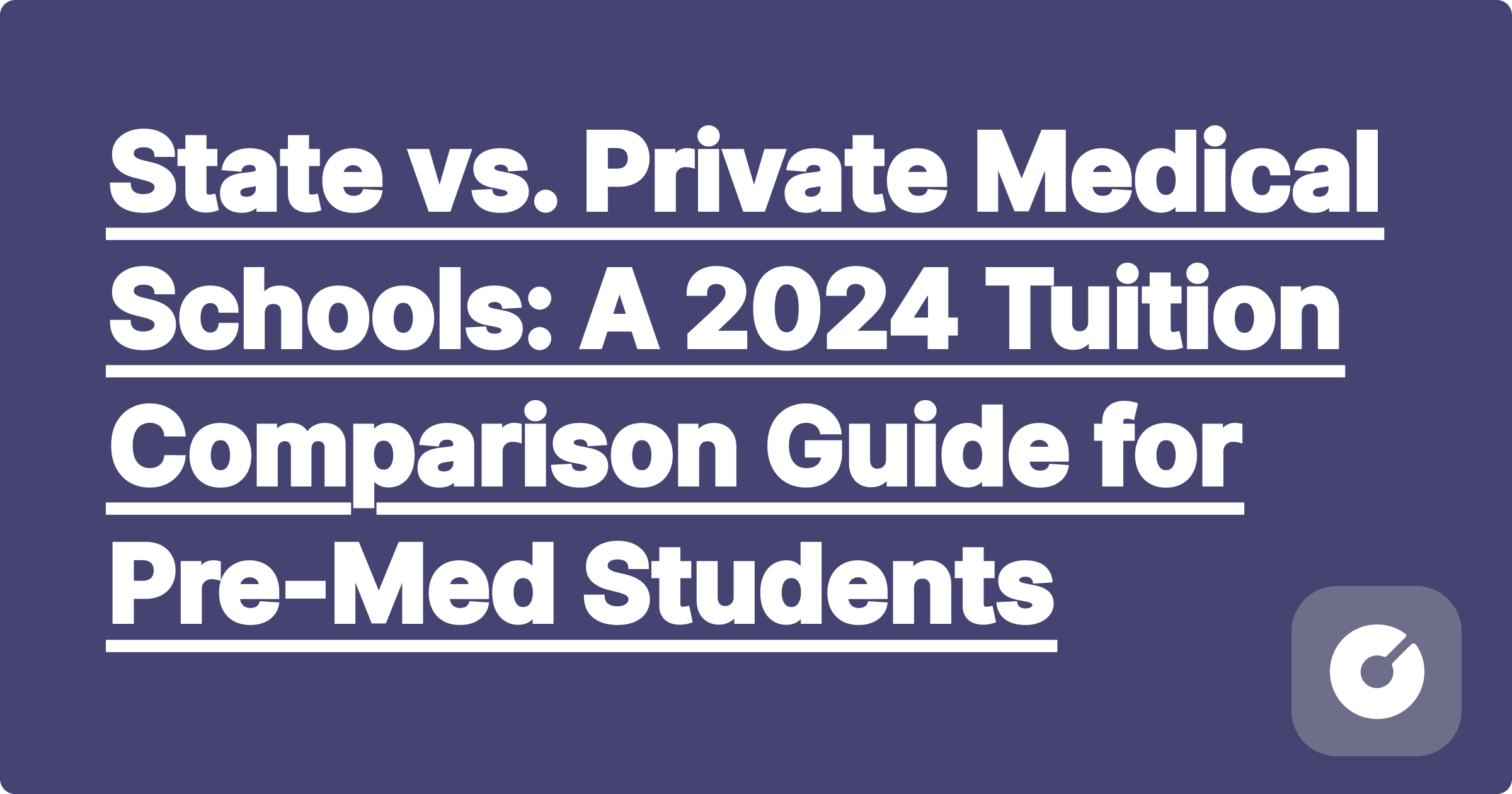
The dream of becoming a doctor is a significant undertaking, demanding years of rigorous study and substantial financial investment. A crucial decision in this journey involves choosing between a state medical school and a private medical school. While both pathways lead to the same ultimate goal – a medical license – the costs, requirements, and overall experience differ significantly. This comprehensive guide will dissect the key differences, focusing on tuition comparisons and providing actionable advice for pre-med students in 2024.
The most striking difference between state and private medical schools lies in their tuition fees. While precise figures vary widely depending on the specific institution and its location, a general trend emerges.
Private Medical Schools: Expect significantly higher tuition costs at private medical schools. In 2024, annual tuition can range from $60,000 to well over $80,000, or even exceeding $90,000 at some elite institutions. Over four years, this translates to a total cost of $240,000 to over $360,000, before considering living expenses, books, and other fees.
State Medical Schools (Public Medical Schools): In-state tuition at public medical schools is considerably lower. Annual tuition for in-state residents can range from $25,000 to $50,000, resulting in a total cost of $100,000 to $200,000 over four years. However, out-of-state tuition at public medical schools often approaches or even surpasses private school tuition, making residency a crucial factor in cost calculations.
Example: Consider the University of California, San Francisco (UCSF) (public) and Stanford University School of Medicine (private). UCSF's in-state tuition is significantly lower than Stanford's, but out-of-state tuition at UCSF could be comparable to Stanford's.
Tuition is just one piece of the financial puzzle. Additional expenses include:
Living Expenses: Rent, utilities, food, and transportation can add $15,000-$30,000 annually to your budget, depending on location and lifestyle.
Books and Supplies: Medical textbooks are expensive! Budget at least $1,000-$2,000 per year.
Fees: Expect miscellaneous fees for student services, technology, and other administrative costs.
Travel: Consider travel costs for rotations and conferences.
Admission to both state and private medical schools is highly competitive. However, specific requirements may subtly differ:
GPA and MCAT Scores: Both types of schools demand high GPAs (typically above 3.7) and MCAT scores (above 510 is generally competitive, but higher is always better). However, the average GPA and MCAT scores for accepted students might slightly vary. Private schools often have slightly higher average scores due to intense competition.
Acceptance Rates: Acceptance rates are notoriously low for all medical schools. Private schools tend to have even lower acceptance rates than public schools. Expect rates below 5% at many prestigious institutions, both public and private.
Let's compare two hypothetical schools:
State School (Public): University of Michigan Medical School – Acceptance rate: ~4%, Average GPA: 3.85, Average MCAT: 518
Private School: Johns Hopkins University School of Medicine – Acceptance rate: ~3%, Average GPA: 3.90, Average MCAT: 520
These are hypothetical examples; actual data fluctuates yearly. Consult each school's website for the most up-to-date information.
Both state and private medical schools offer financial aid packages, including loans, grants, and scholarships. However, the availability and amounts can vary significantly.
Private Schools: While private schools often have larger endowments, leading to potentially higher scholarship amounts, the overall cost of attendance remains high, and reliance on loans is common.
State Schools: In-state students at public medical schools may benefit from lower tuition and potentially more generous state-funded grants and scholarships. Out-of-state students, however, will find themselves in a similar financial position as those at private institutions.
Tips for Securing Funding:
Apply for all scholarships: Explore federal, state, institutional, and private scholarships.
Maximize loan amounts wisely: Understand the long-term implications of medical school debt.
Explore research opportunities: Many schools offer stipends or grants for research assistantships.
The application timeline and process are largely similar for both state and private medical schools. However, the timing of application submission deadlines might vary slightly. It's crucial to research each school's specific requirements and deadlines. The AMCAS (American Medical College Application Service) is the standard application portal for most schools.
Research extensively: Create a list of schools that align with your academic profile, career goals, and financial situation.
Start early: Begin preparing for the MCAT well in advance, and maintain a strong GPA throughout your undergraduate studies.
Shadow doctors: Gain experience by shadowing physicians in various specialties.
Volunteer or work in healthcare: Demonstrating commitment to patient care is crucial.
Network: Attend medical school fairs and connect with current medical students and alumni.
* Develop strong letters of recommendation: Cultivate relationships with professors and mentors who can write strong letters of support.
The decision of whether to attend a state or private medical school is deeply personal and depends on individual circumstances, financial resources, and career aspirations. While private schools offer prestige and potentially more resources, state schools provide a cost-effective path for in-state residents. Careful consideration of tuition costs, admission requirements, financial aid options, and personal preferences is essential for making the best decision for your future medical career. Remember to research thoroughly, plan strategically, and seek guidance from pre-med advisors and mentors throughout the process. The path to becoming a doctor is challenging but rewarding; choose the path that best aligns with your goals and capabilities.
Second Career Medical Students: Changing Paths to a Rewarding Career
Foreign Medical Schools for US Students: A Comprehensive Guide for 2024 and Beyond
Osteopathic Medicine: Growing Acceptance and Benefits for Aspiring Physicians
Joint Degree Programs: MD/MBA, MD/JD, MD/MPH – Your Path to a Multifaceted Career in Medicine
Physician Assistant vs. Medical School: A 2024 Decision Guide for Pre-Med Students
Part-Time Work During Medical School: Is It Possible? A Practical Guide for Pre-Med Students
Medical School Housing: On-Campus vs. Off-Campus – A Comprehensive Guide for 2024 & Beyond
Balancing Relationships During Medical School: A Guide for Pre-Med Students
NIH Summer Research Programs for Pre-Med Students: Your Ultimate Guide to Success in 2024
Medical School Application Mistakes to Avoid: A Comprehensive Guide for Pre-Med Students